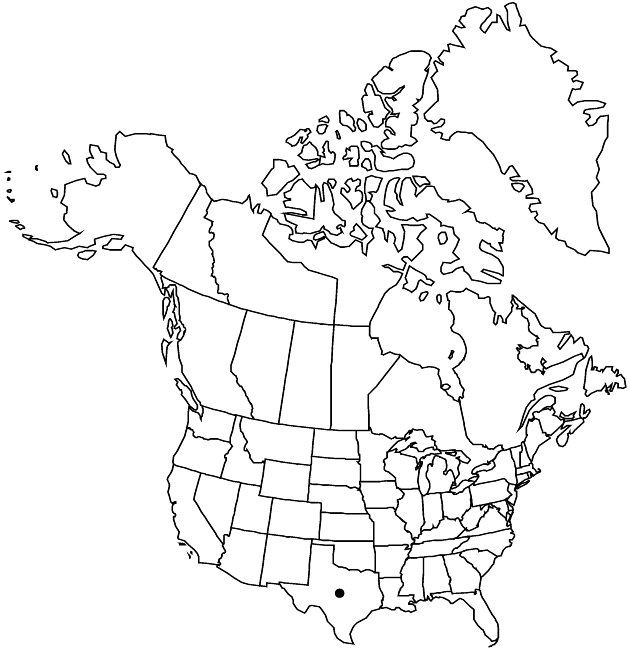Rayjacksonia aurea
Amer. J. Bot. 83: 369. 1996.
Common names: Houston camphor-daisy
EndemicConservation concern
Basionym: Haplopappus aureus A. Gray Mem. Amer. Acad. Arts, n. s. 4: 76. 1849 (as Aplopappus)
Synonyms: Machaeranthera aurea (A. Gray) Shinners
Treatment appears in FNA Volume 20. Treatment on page 438.
Annuals, 20–100 cm, herbaceous. Leaf blades linear to linear-oblanceolate, mid-cauline 1–3(–4) mm wide. Heads on short, sometimes bracteate peduncles, not surpassed by distal leaves. Involucres 4–7 × 10–15 mm. Phyllaries in 4–5 series, tightly appressed, strongly unequal, apices erect to slightly spreading, ca. 1 mm wide, herbaceous. Ray florets 14–19; corollas 6.5–9.5 mm. Disc florets: corolla tubes ± equaling limbs. 2n = 12.
Phenology: Flowering Oct–Nov(–Dec).
Habitat: Sand or sandy loam, fields, pastures, usually relatively bare sites
Elevation: 0–10 m
Discussion
Of conservation concern.
Rayjacksonia aurea is now restricted to a few, small populations in the vicinity of Houston. It is in the Center for Plant Conservation’s National Collection of Endangered Plants.
Selected References
None.
Lower Taxa
None.
